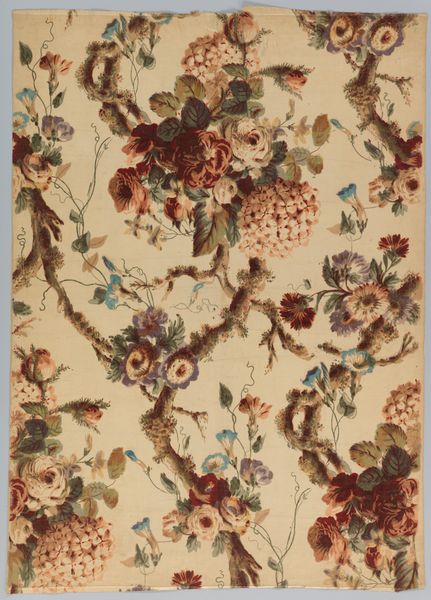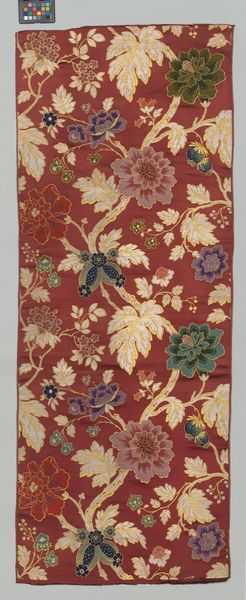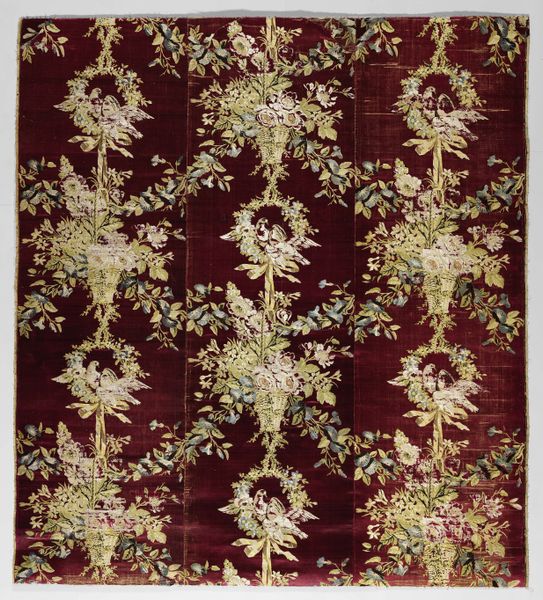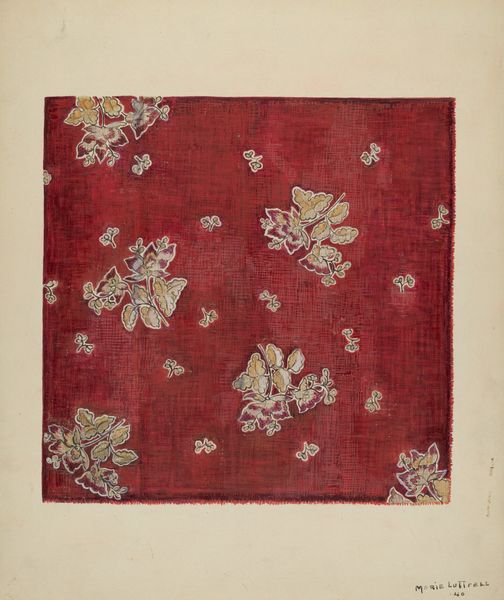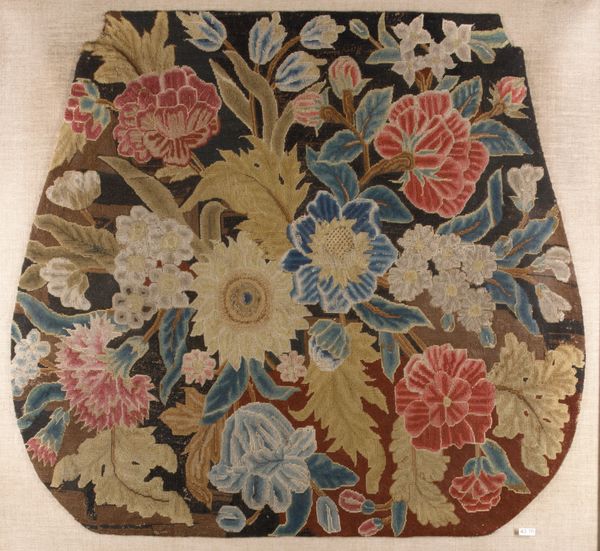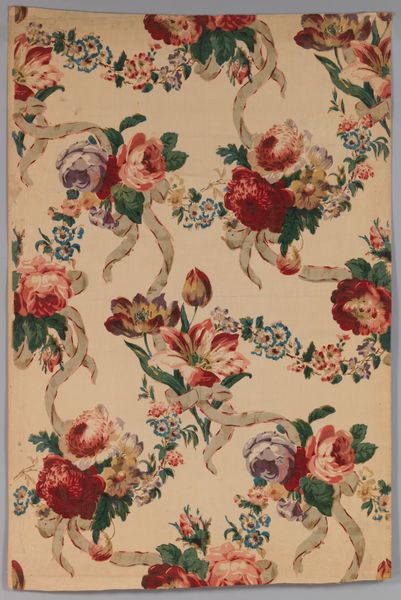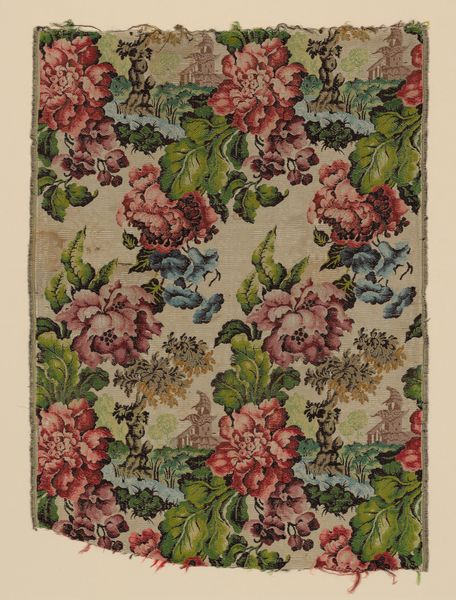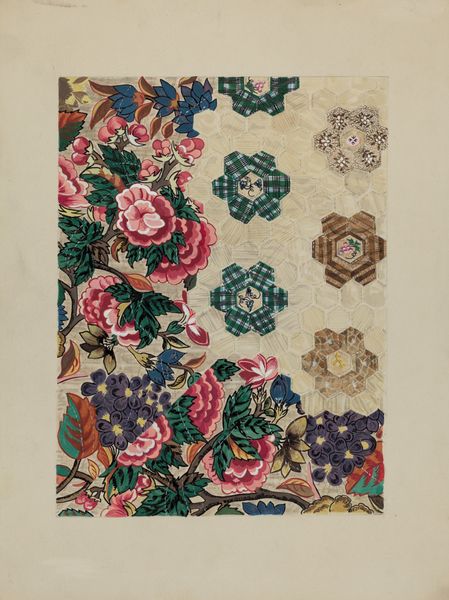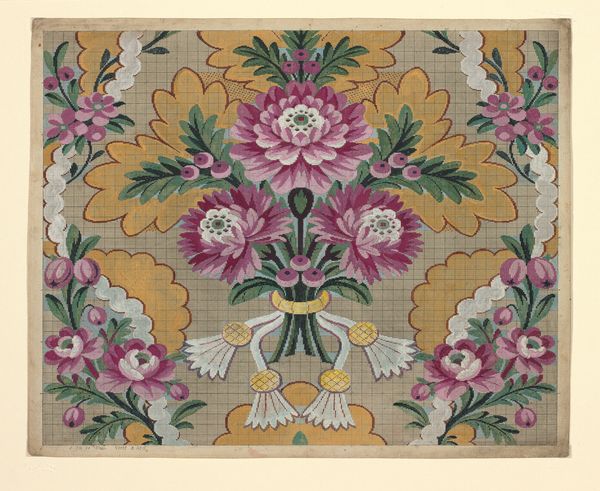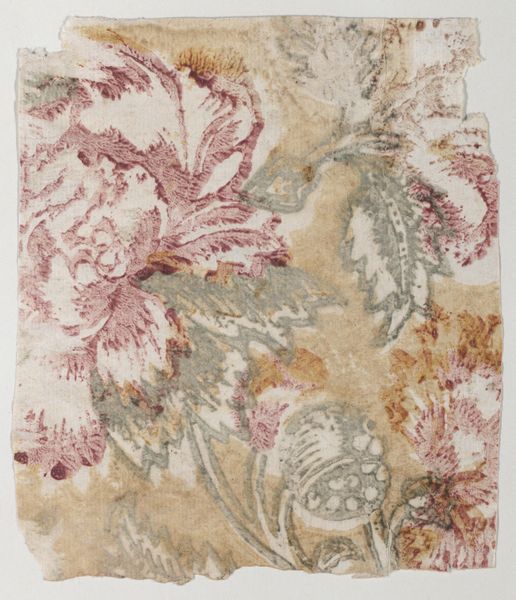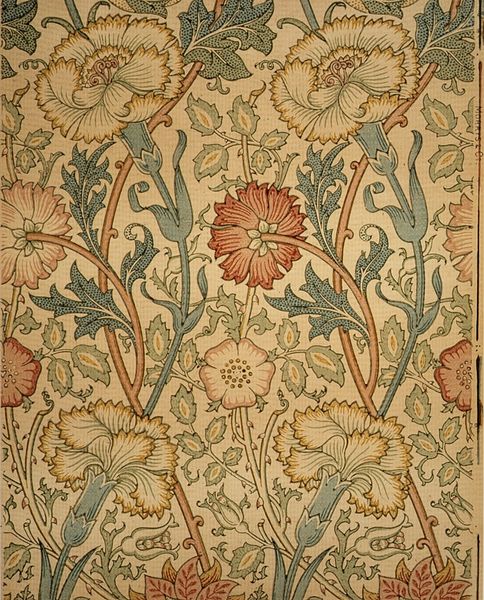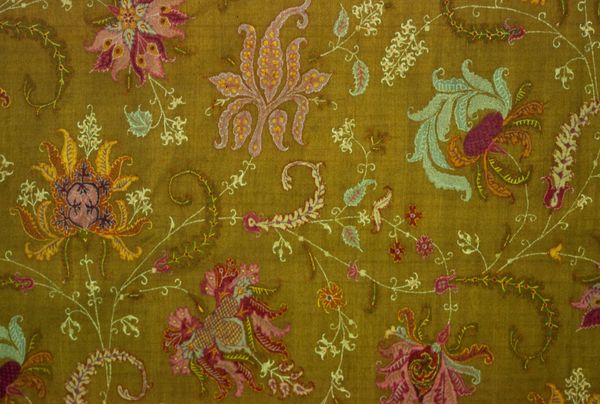
Dimensions: 192.4 × 54.8 cm (75 3/4 × 21 5/8 in.) Warp repeat: 87.3 cm (34 3/8 in.)
Copyright: Public Domain
Editor: Here we have Philippe de La Salle's "Panel" from around 1775, a textile piece showcasing weaving techniques. The intricate detail of the floral arrangements and birds creates a rather decorative effect. What stands out to you most when you look at this panel? Curator: For me, it's about decoding the symbolism and its connection to social power structures of the time. Weaving, often associated with domesticity and women's work, is elevated here to an art form, but within a very specific Rococo aesthetic favored by the aristocracy. Editor: Rococo, right, with all its ornamentation. So, how does that elevation you mentioned relate to, say, gender or class? Curator: Well, consider who this textile was likely made *for*. The aristocracy would commission such elaborate panels as displays of wealth and refinement, subtly reinforcing their status through conspicuous consumption. The imagery, those doves for example, might seem like simple motifs of love and peace, but they're also signifiers of cultivated taste, separating the elite from the common. Editor: It's interesting how something so seemingly delicate can also represent something more powerful. Curator: Exactly. And remember that textile production at the time was also tied to colonial economies and global trade networks. So even a "simple" flower here could allude to complex economic and power dynamics of the 18th century. Where do you see the relevance today? Editor: I think seeing this as more than just decoration helps connect historical art to current conversations about inequality, labor, and representation in visual culture. I'll never see patterns the same way. Curator: I agree. It prompts us to keep asking: Whose stories are woven into these works and whose are left out of the frame?
Comments
No comments
Be the first to comment and join the conversation on the ultimate creative platform.

